Nigerian Dwarf goats are a small breed of dairy goats that originated in West Africa. They are known for their miniature size, friendly disposition, and high milk production relative to their size. Nigerians are versatile animals suitable for small farms, suburban homesteads, or as enjoyable pets. Their manageable size and friendly nature make them a popular choice for goat enthusiasts.
Small in size, great for dairy
Small in stature, does typically stand about 17 to 21 inches tall at the shoulder, and bucks slightly larger. They usually weigh up to 100 pounds. They come in a variety of colors and patterns. Common coat colors include black, chocolate, gold, and cream. They can also have various markings and patterns such as moon spots, stripes, and roaning.
Despite their small size, Nigerian Dwarf goats are excellent dairy producers. They have a high butterfat content in their milk, making it suitable for cheese and soap production. On average, a Nigerian Dwarf doe can produce over a quart of milk per day.
Nigerian Dwarf goats are known for their friendly and sociable nature. They are often kept as pets or companion animals because of their gentle disposition. They can also be easily trained, making them suitable for various purposes, including 4-H projects and educational programs. With proper care, Nigerian Dwarf goats can live up to 12 to 14 years or even longer. These goats are capable of breeding year-round, and they often have multiple kids (baby goats) per kidding. The gestation period is approximately 145 to 150 days. They are prone to common goat health issues, such as parasites and hoof problems. With regular veterinary care, vaccinations, and proper nutrition Nigerian Dwarfs are relatively easy to keep healthy.
- Pasture and forest vegetation including vines, leaves, tree nuts and fruit
- Hay
- Alfalfa
- Fruit and vegetables year round, pumpkin and squash in the fall
- Supplemental mixture of commercial goat feeds
- Multicolored, white, cinnamon, tan, black with spots
- Horned or naturally hornless (we do not disbud our goats)
- Smaller goat with a shy to playful temperament
- Adults are less than 100 pounds
- Great tolerance to the Florida weather except rain
- 1 doe can produce up to 95 gallons of milk per year
- Milk is high in butterfat and protein
- Excellent ice cream, cheese, butter and rich ingredient in desserts
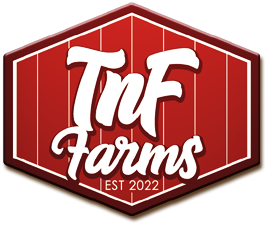

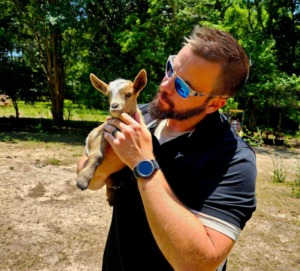
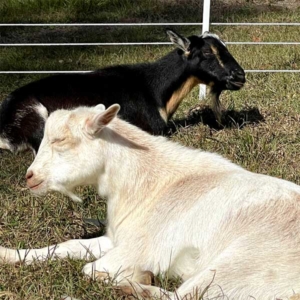
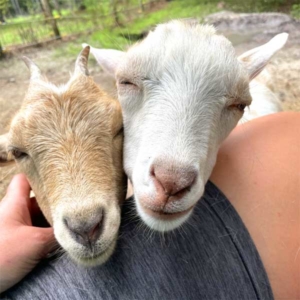
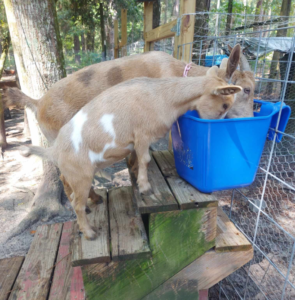
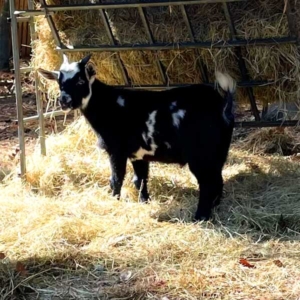
2024 Dairy Goat Guide
/in Farm Animals, Florida Living, Homesteading, Nigerian Dwarf Goats, Nubian Goats/by FaithNubian goats are believed to be one of the oldest domesticated dairy breeds, and their history can be traced back thousands of years. Nubian goats trace their roots to North Africa, with historical significance in Nubia. The Nubia region is now part of Sudan and Egypt. Nubians are known for their distinctive characteristics and valuable contributions to the dairy and meat industries. The breed we know today as Nubian goats was from British does (female goats) being crossed with bucks (male goats) from Africa.
This is an extensive post, I will be covering:
Dairy Goats: Two Adorable Breeds
/in Farm Animals, Farmer's Market, Homesteading, Nigerian Dwarf Goats, Nubian Goats/by FaithWith the choices between Nigerian Dwarf Goats and Mini Nubian Goats, I couldn’t decide! So we have both kinds of goats at TnF Farms. If you’re trying to decide which of these gems is best for you, it boils down to personal preferences. Join us as we break down the differences between both breeds.
Growing lemons in Florida
/in American Guinea Hogs, Farm Animals, Florida Living, Homesteading, Nigerian Dwarf Goats/by FaithWhen we bought the property that is now TnF Farms, we saw that there were some mature fruit trees on the property. We thought they may have been pears. No, they were lemons. The first late fall harvest, we were pretty excited. The lemons were big and bright yellow. We cut into one and it was full of seeds. We tried a couple of others and they were very seedy. Then we tasted one and discovered it wasn’t pleasantly tart, but punishingly bitter. No amount of sugar added to this fruit would make lemonade, lemon curd, or lemon bars.